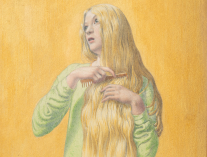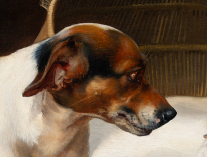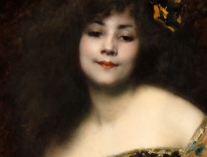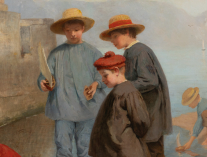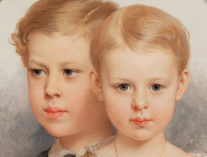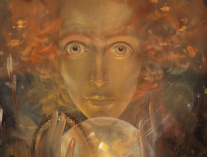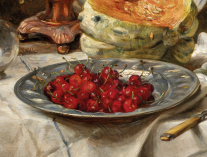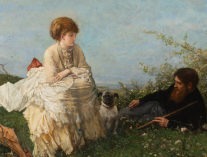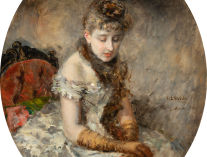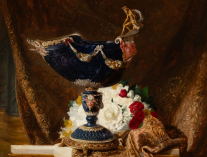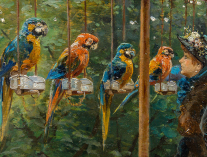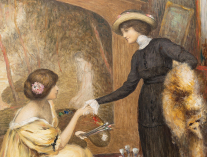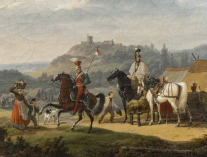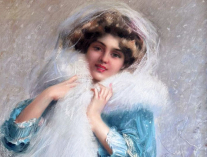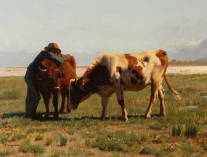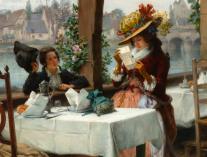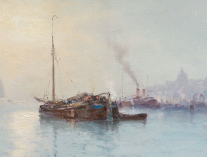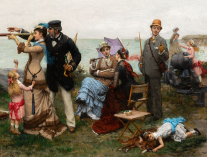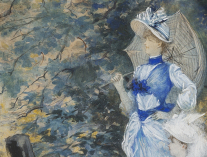Jules Georges Victor Clairin
Froufrou
Oil on canvas signed lower left "G.Clairin"
The present painting is directly inspired from Meilhac and Halevy’s comedy and from Sarah Bernhardt’s part as the heroine. It represents Froufrou in a white ball gown referring to another painting that the artist exhibited at the 1882 Paris Salon des Artistes Français (n °580). When the 1882 painting was exhibited, it encountered a phenomenal success. Art-critics wrote about the “delicious Froufrou.” They admired the “pretty modern accent” of both the character and the brushwork. They praised the artist’s style for its “great delicacy of tones and infinitely technical skill.” In his 1882 Salon-Chronicle journalist Louis Enault devoted two full pages to Froufrou, evoking the sensuality of the model: Read more
“I challenge you, when she passes by, not to turn your head. The bodice bursts, the skirt bubbles, the baskets swell and the croup wriggles.” The painter skillfully took advantage of a subject intended to entertain: “This Froufrou sounds like a Clairin’s victory.”
The beauty of the model is reminiscent of the figures of women that Georges Clairin painted at the same time for the murals at the Eden-Théâtre, 7 rue Boudreau in Paris. The resemblance is striking with the sketched face of the central figure of the Char de la Dance. The original sketch was given by Georges Clairin to Jean Alboize to illustrate his article on Clairin’s decorative paintings for the Eden-Théâtre. Studio model or dancer, Georges Clairin chose this young woman who best embodied the female type of her time.
Duane Van Vechten (1898-1977) & Edwin C. Lineberry (1912-2002), El Rancho de la Mariposa
(Butterfly Ranch) Taos, New Mexico.
Gifted by Edwin C. Lineberry to the Van Vechten – Lineberry Taos Art Museum in 1994, New
Mexico (United-States)



Our artwork available
93400 Saint-Ouen sur Seine




